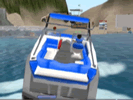Experiences
From February to April 2010 twenty one students from the universities of Utrecht and Valencia participated in the follow up project in Second Life. The project was integrated in the university of Utrecht as a blended learning experience in the first year Spanish language course (TV3) at B1 proficiency level. This Second Life group consisted of 14 FL students [Utrecht] that participated in couples with 7 NSs [Valencia].
Five tasks were developed for this follow up. The tasks were in line with the coursebook [Gente 3] and were carried out after the corresponding unit had been dealt with in the classroom. As well as the language objectives they were also heavily loaded with cultural aspects which we hoped would trigger interaction.

Type: Second Life session
Presenter(s):
Date: 10-06-10
Length: 00:01:49
Participants followed a series of tutorials to get acquainted with Second Life and after a plenary session they were ready to go onto their task sessions in the third week of the course. The first session was a challenge for most of them: could not sit down, oops! would walk into a wall, difficult landings after flying… situations that prompted spontaneous interactions that would have never taken place in a classroom setting. And the task was done, and all of a sudden it was an hour and a half later and “I have never spoken so much Spanish in my life!”.
Technical problems were encountered from the beginning to the end [Internet connection, Second Life configurations, recording of sessions] which can be regarded as the negative aspects of the project [both, by students and teachers]. These technical hiccups did not prevent a highly positive evaluation of their experience. Among the comments to summarize their learning experiences during the project were: it helped them to broaden their intercultural competence and motivating and challenging interactions that did not feel like classroom assignments.
All sessions have been recorded and participants have completed pre and post-tests as well as pre and post-questionnaires after each task. Material enough to be analysed and data that will hopefully give us the positive evidence to carry on with projects like this. The students are ready for it: when asked if they would like a project like this to be part of their language course they all answered “yes!”.


